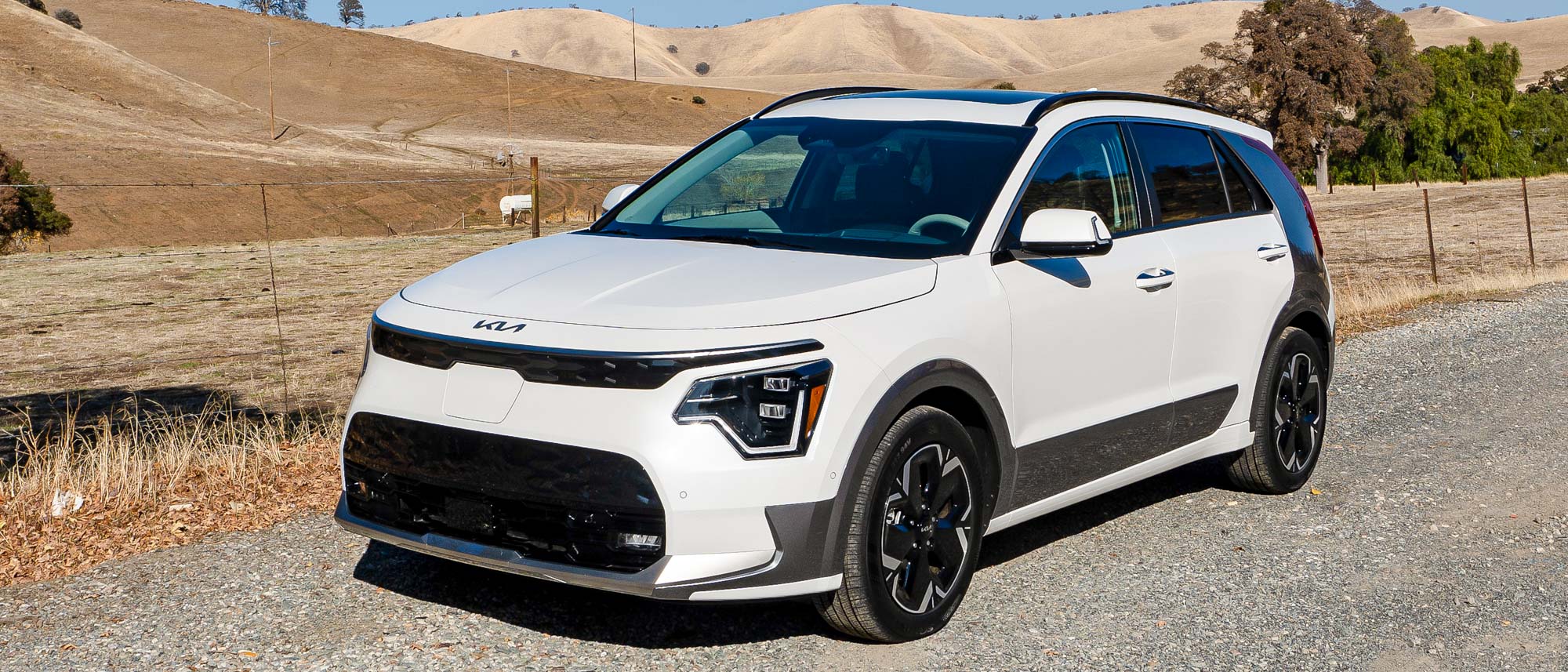Tom's Guide Verdict
The Kia Niro EV is cheaper for a reason, but it’s still a solid and efficient around-town EV with the capacity for the occasional road trip.
Pros
- +
Better than EPA-rated range
- +
Plenty of head and legroom for four adults
- +
Stylish exterior
- +
Quick at-home charging
Cons
- -
Weird climate/media controls
- -
Sub 100 kW DC fast charging speed
Why you can trust Tom's Guide
Release Date: Available Now
Price: From $39,550, $46,495.00 as tested
Power: Single-motor front wheel drive
Horsepower: 201 HP
Battery Range: 253
Top Speed: 104 mph
Smarts: Hyundai infotainment with CarPlay and Android Automotive support
Traditionally, EVs with direct gas-powered counterparts are built on platforms that favor the petroleum-enabled vehicle. Kia recently has done something a bit different. For the latest iteration of the Niro small SUV, the Korean automaker developed the vehicle as EV first with the inclusion of a gas-engine second. It’s likely to be how future Kias (and vehicles from other automakers) are developed.
The result is a Kia EV that straddles the new world of the Hyundai Motor Group’s E-GMP platform and a shared platform that still makes sure that those not ready to make the jump to EVs have a hybrid and pure-gas experience available. The Niro is a very good EV but it’s not at the level of the Kia EV6, likely because the automaker is still building a vehicle for every type of buyer.
Yet, Kia has pulled off an impressive feat with the Niro. It improves on an already good vehicle with more room, better efficiency, and more importantly increased range. The Niro EV has an EPA-rated range of 253 miles from a 64.8 kWh capacity battery pack versus the 2022 model which tops off at 239 miles.
We tested the Niro on a 100-mile loop. 50 percent consisted of highway driving ( we set the cruise control to 70 miles per hour for this portion) while the other 50 percent was backroad and suburban driving. At the end of our test, the Niro EV posted an impressive range of 270 miles — a jump of 17 miles over the EPA rating.
During daily drives, the front-wheel drive Niro EV is far from an exciting road companion. Even with 201 horsepower, you’re not going to impress your friends or other drivers. Instead, the vehicle slots in perfectly into the daily life of a person that needs plenty of room for four adults and their stuff as they travel about town.
Interior technology is where the Kia departs the most from its predecessor. The climate control/media controls are what we’ve seen in the Kia EV6 and Hyundai Ioniq 5. A touch bar that switches from climate to media controls. It’s a clever way to save space, but after a week behind the wheel, it can be annoying to find yourself turning up the heat when you’re really trying to turn up the volume on your favorite song.
The rest of the vehicle’s innards are a comfortable mix of minimalism and forward-looking design. The seats offer snug support that doesn’t offend your spine after hours on the road, so long as you’re fine with a slightly stiffer chair.
While it’s not as amazing as the EV6, the $39,550 starting price means the Kia Niro EV does offer a slightly less expensive entry point in the automaker's lineup to the electric vehicle world To the tune of nearly $10,000. What it lacks in driving dynamics it makes up with range and utility in a package that actually looks good.
Kia Niro EV: Availability, pricing, and trim levels
The 2023 Kia Niro EV is available now and is offered in two main trim levels. The entry-level Wind starts at $39,550. It has the identical powertrain, battery pack, and chassis as the more expensive Wave trim level which starts at $44,550. Both variants have an EPA range of 253 miles, 201 horsepower, and 188 pound-feet of torque. They both also charge at up to 85 kW at compatible DC fast charging stations and support level two up to 11 kW.
Both vehicles come with heated seats, a 10.25-inch infotainment display with support for CarPlay and Android Auto, wireless smartphone charging, and climate zones.
That extra $5,000 for the wave adds ventilated seats to the front, 10-way adjustablility to both front seats (instead of just the driver’s seat), heated steering wheel, sunroof, vehicle to load inverter, and forward and rear parking warnings. The Wave also has the available option of lane centering, in addition to adaptive cruise control and remote park assistance. With your vehicle’s keyfob, the Wave can be moved in and out of tight parking spaces (forward and backward in a straight line) without the driver behind the wheel. Helpful when you return to your vehicle and another car has encroached on your parking space blocking the doors from opening.
Both trim levels have a $1,295.00 destination fee.
Kia Niro EV review: Range, Battery and Charging
Both trim levels of the Kia Niro EV have an EPA-estimated range of 253 miles. Based on our driving tests, it looks like Kia and the EPA underreported how far the vehicle will travel while fully charged.
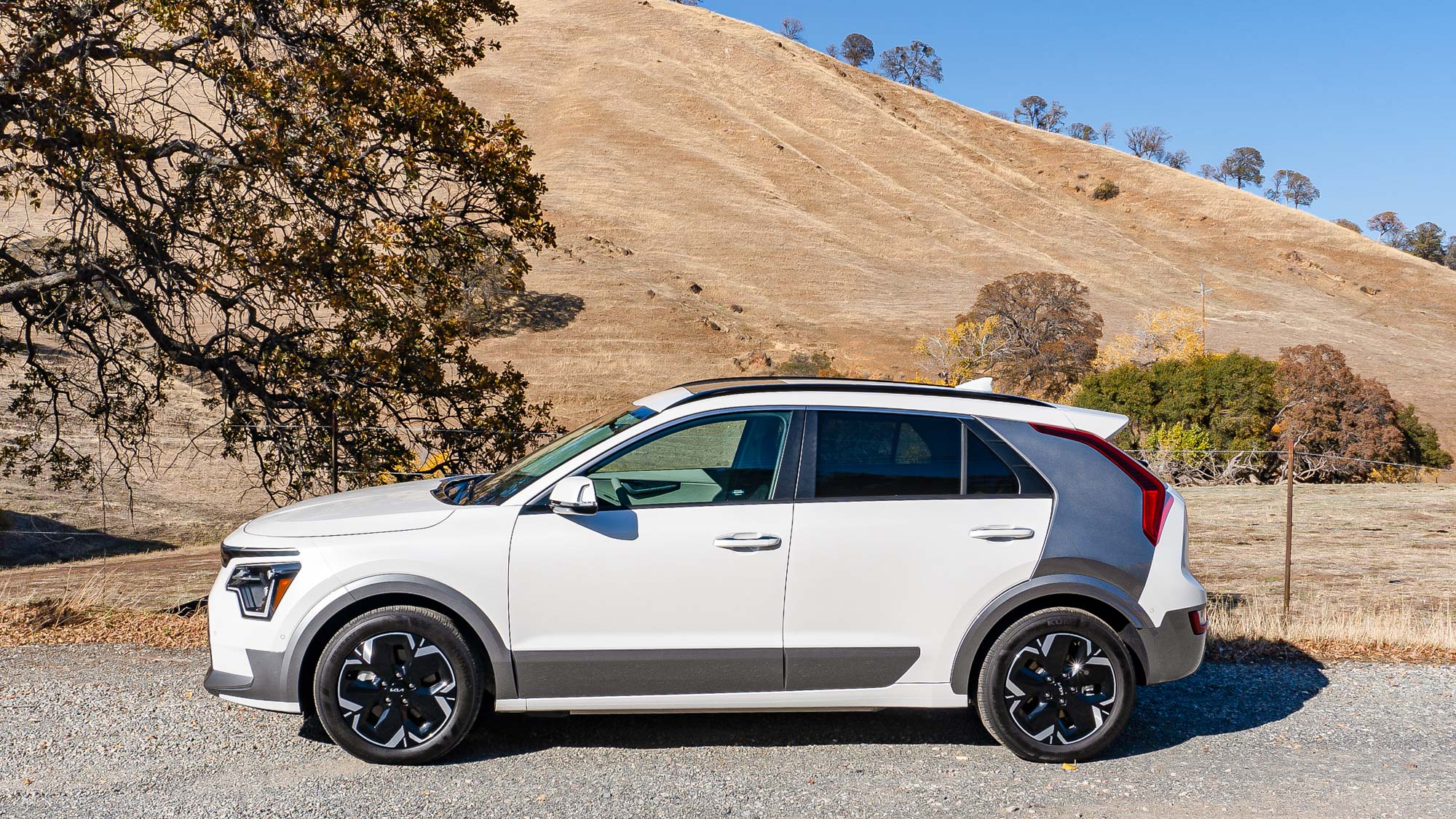
We tested the Wave trim level on our 100 mile loop that includes 50 miles of highway driving and 50 miles of backroad and suburban driving. During our time on the highway, we set the cruise control to 70 miles-per hour. The Kia Niro EV posted a range of 270 miles in this test, a full 17 miles higher than the EPA’s estimates.
As for keeping the Niro EV charged up, it supports DC fast charging at up to 85 kW at compatible stations. Kia says the vehicle can charge from 10 to 80 percent in 45 minutes. Compared to the Kia EV6, this is very slow. But this vehicle is also on an older platform, and while this model may be EV first it’s not the E-GMP architecture that the Hyundai Motor Group is using for its newer electric vehicles. That said, the Niro charges quicker than the Nissan Leaf and Chevy Bolt, but slower than the Volkswagen ID.4 which is using VW’s MEB platform.
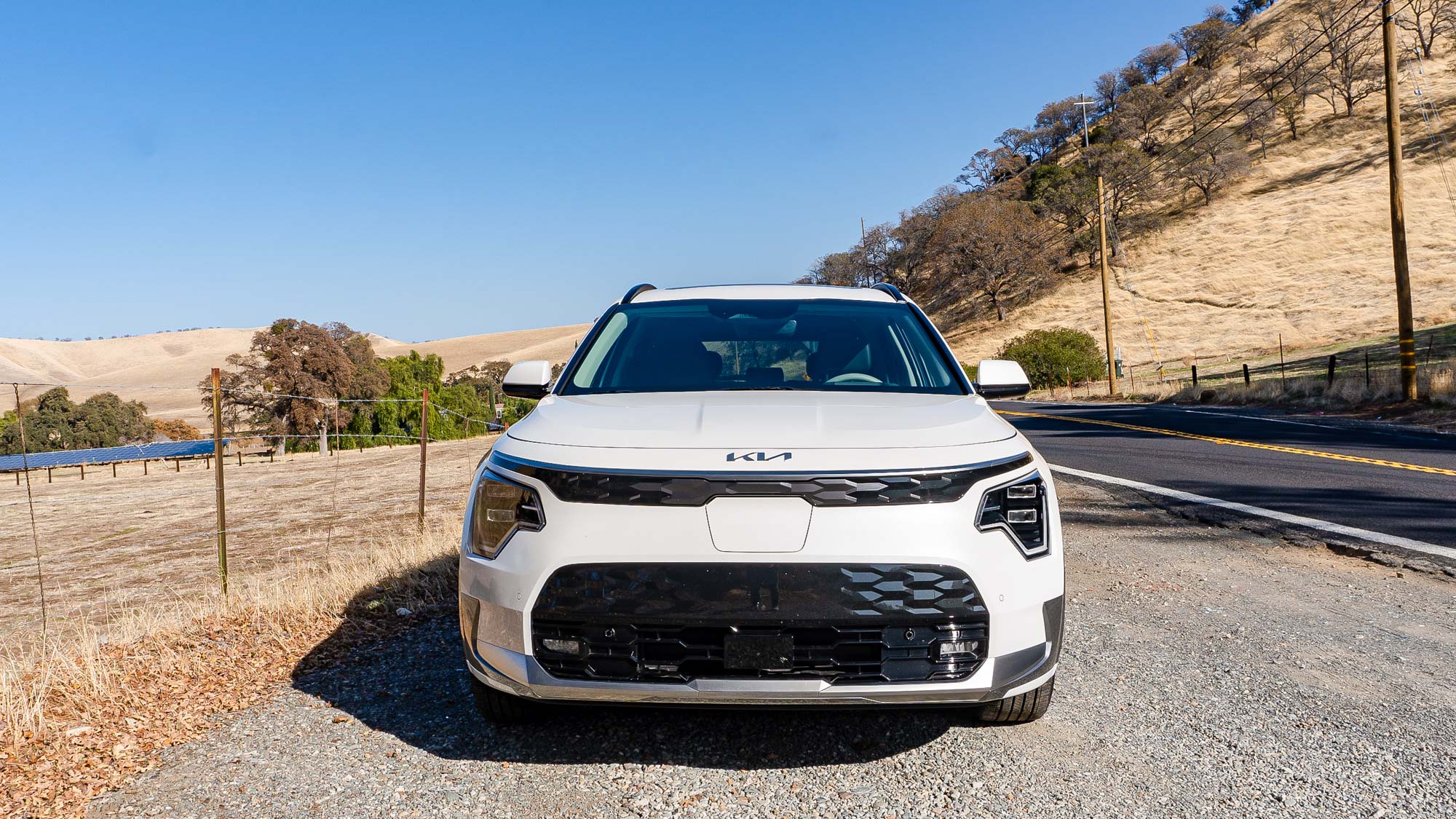
At home and at level charging stations, the Niro EV has an 11kW onboard charger that should charge from zero to 100 percent in a little over six hours according to Kia. It’s more than quick enough for overnight charging and during our home charging tests, we had zero issues. The vehicle was always topped up and ready to go come morning.
Kia Niro EV review: Interior and cargo space
The Niro EV is a mixture of the old Niro and the new EV6 when it comes to the interior. It’s more forward-thinking than the previous generation Niro, but isn’t quite as ‘out there’ as the EV6. It’s a bit of a Goldilocks situation for those looking to jump into the EV world but aren’t quite ready for some of the more outlandish interiors the rest of the market has to offer.
The biggest change is the inclusion of a black touchbar that sits below the 10.25 infotainment display, which is used for both media and climate controls. The weird thing is that it does one or the other, but not both at the same time. To access media, you have to tap an area that switches the display to media controls. Want to adjust the interior temperature? Tap the same area to surface the climate controls. It seems cool for a bit then after a week, it loses its fun factor. Fortunately, you can adjust the volume and media from the steering wheel controls, but on more than one occasion we found ourselves turning up the temperature instead of the music.
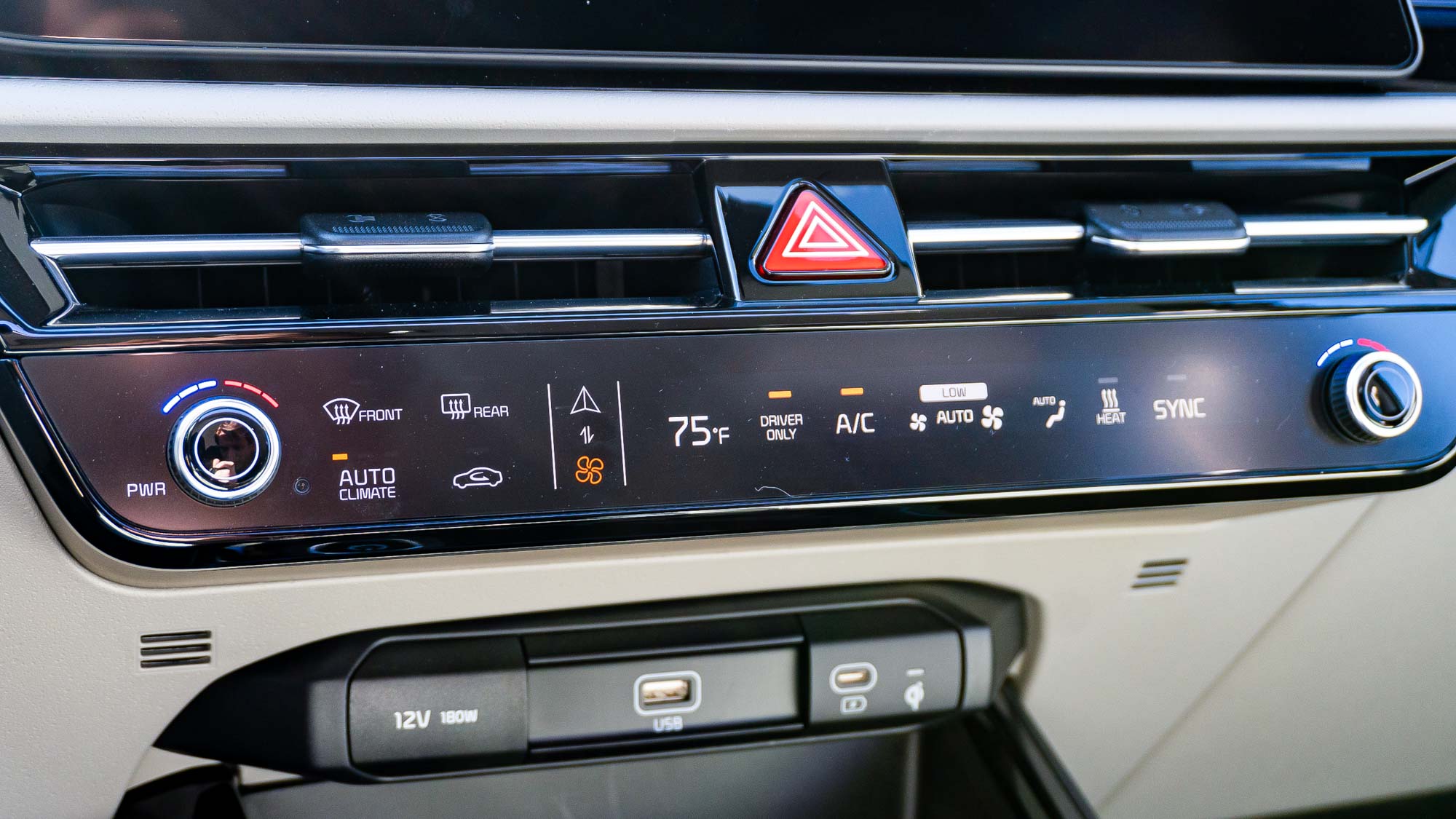
Beyond that weirdness, the rest of the controls in the vehicle are easy to reach and are logically placed. For example, having drive mode on the steering wheel is always a good thing. Most of the major items you want to be able to access outside of the infotainment system are actual physical buttons and knobs as well.
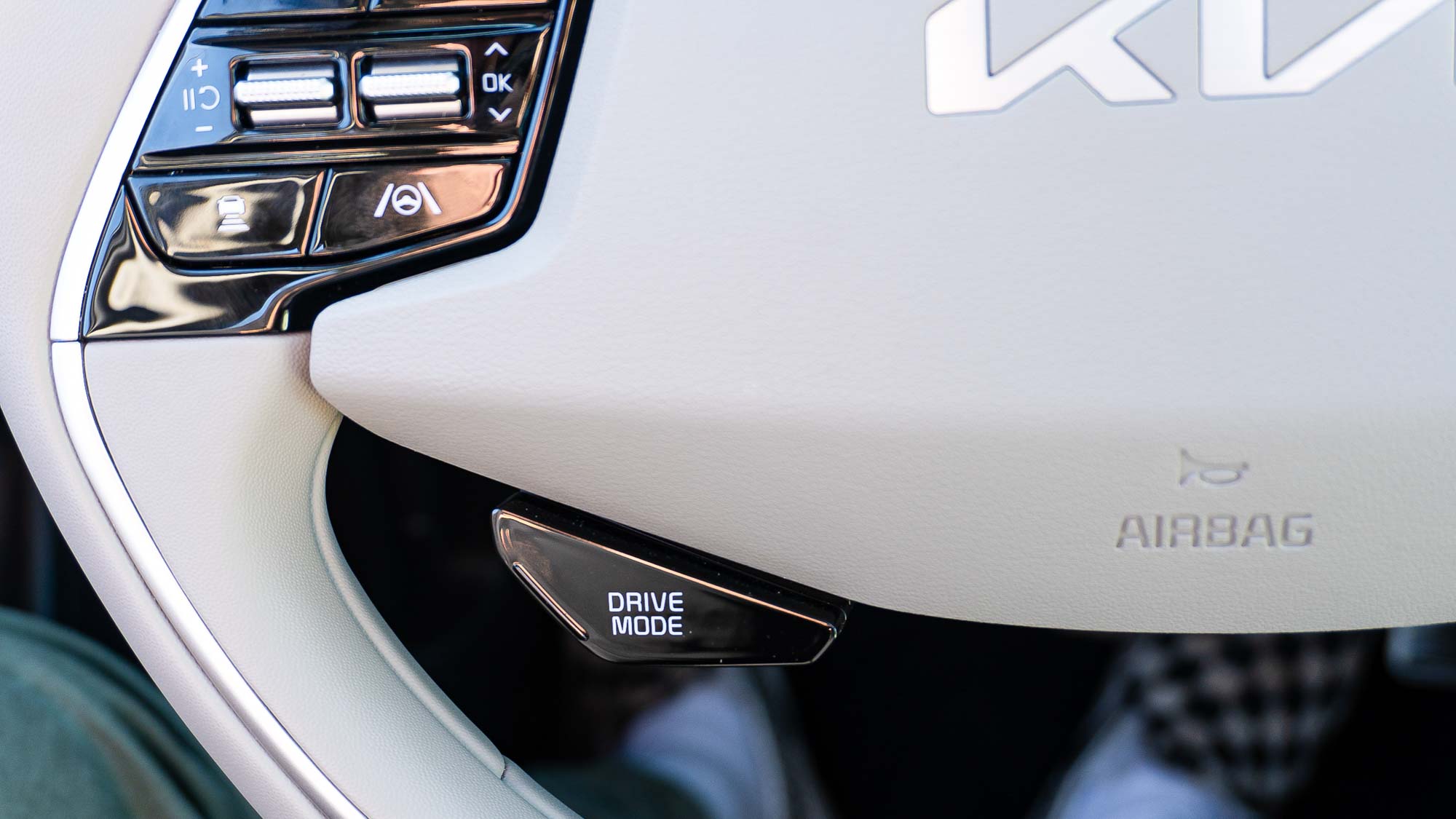
The faux-leather (or vegan leather) seats were comfortable but slightly on the stiff side. We found them to be more than adequate for long drives both in the front and back seats. The previous Niro already had good legroom in the rear seats, but this generation has increased that space for front and rear passengers. Headroom and legroom were not an issue even for passengers taller than six-feet.
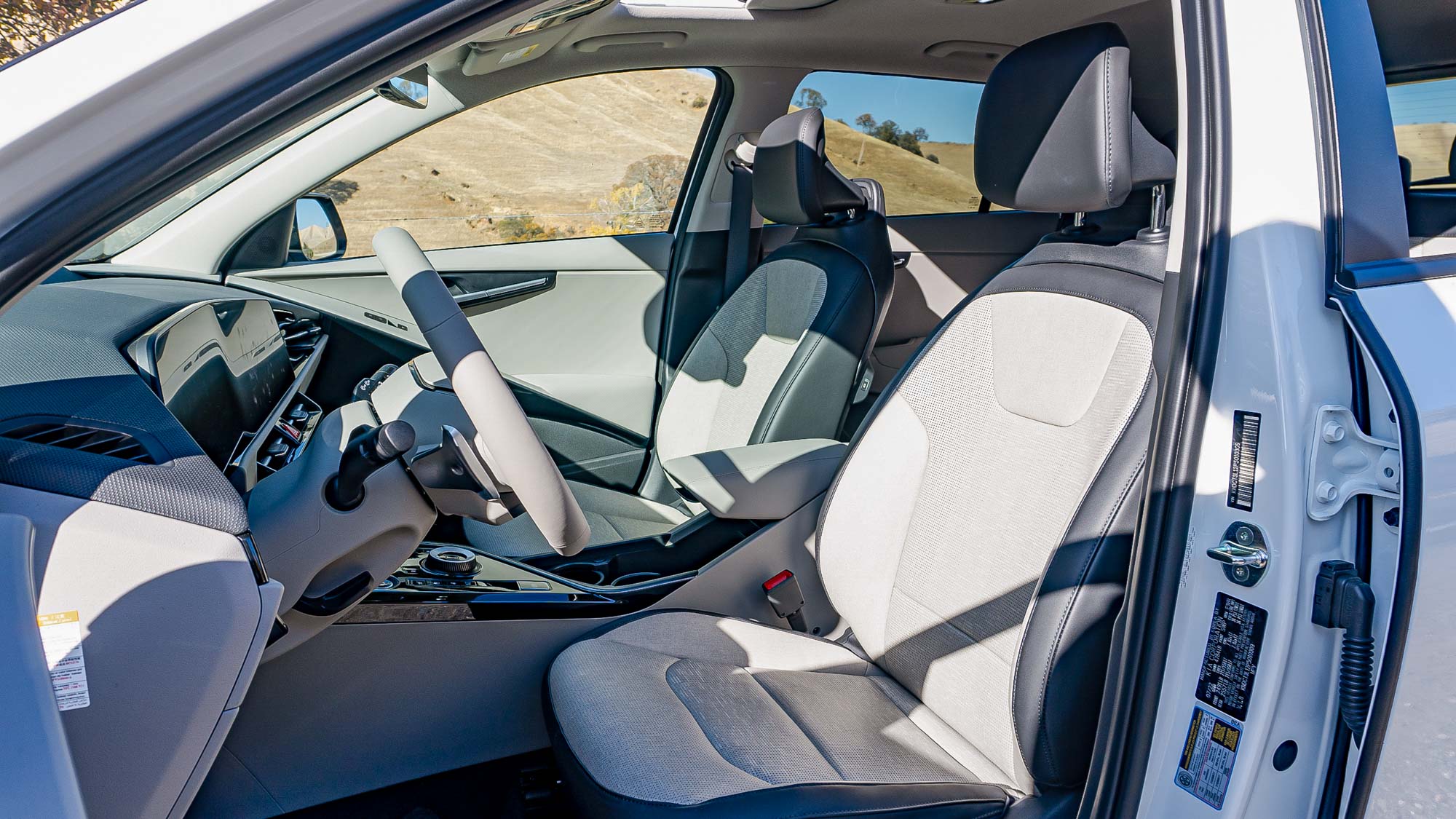
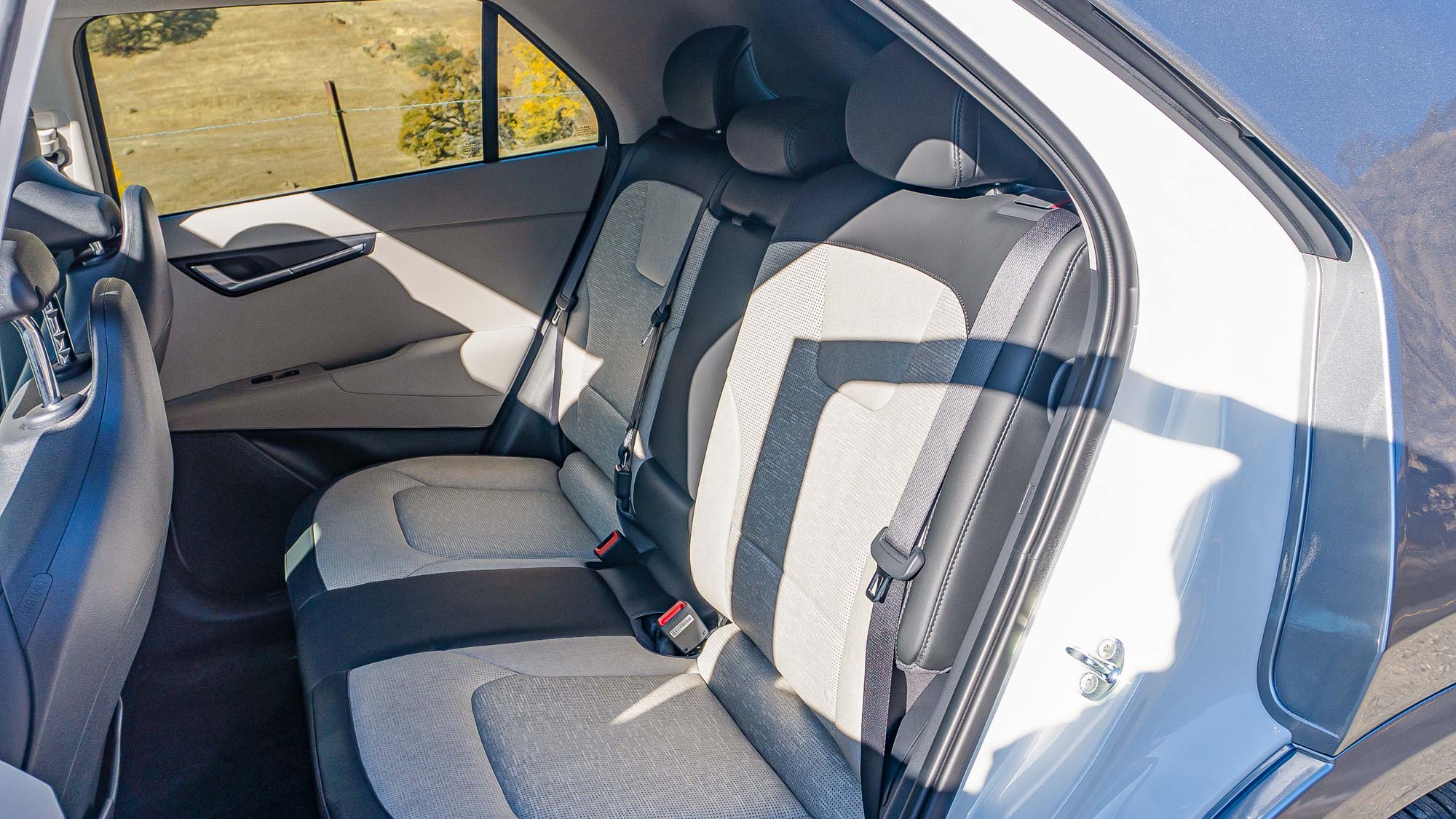
Overall, Kia has made sure its larger Niro EV translates some of that space for the passengers. This is especially important for families looking for an EV but can’t pull the trigger on some of the new more expensive EVs on the market.
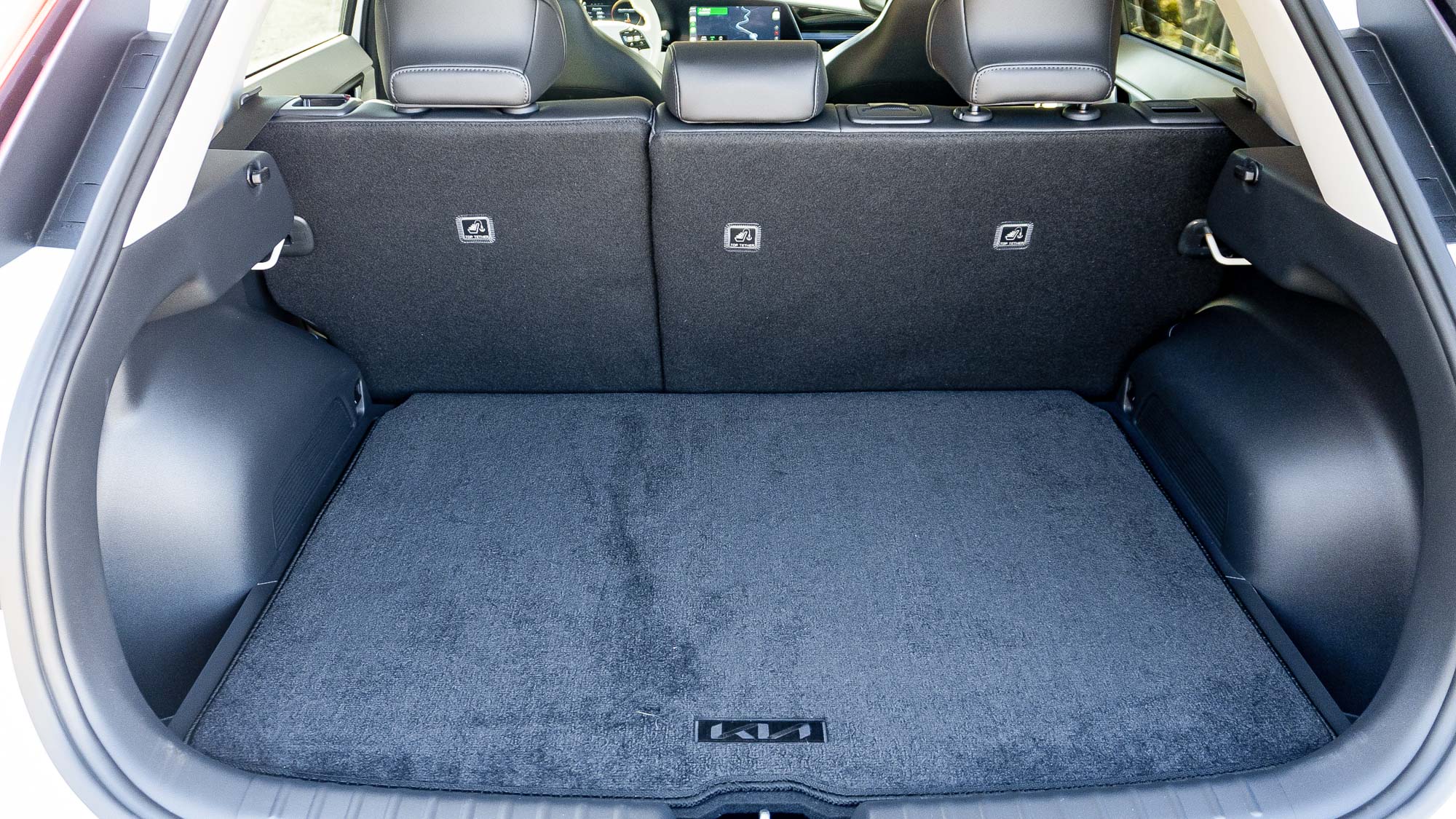
As for cargo space, with the backseats up the Niro EV has 22.8 cubic feet of space including the area under the floor tray. With the rear seats folded down, that space increases to 63.7 cubic feet of space. Again, that’s including the space under the rear seat floor. The Niro EV does not have a frunk, but it does have plenty of areas in the cabin to store smaller items like bags.
Kia Niro EV review: Tech and Safety Features
The Niro is rolling the same infotainment system we’ve seen in Kia’s for the past few years. There’s a minimalistic 10.25-inch home screen and once you get past that, it’s essentially a tablet layout. That’s not a bad thing, Ii’s what people know and it’s easy to navigate. It’s weird that Kia gets props for just making something that we all understand, but here we are. It’s a good example of not over-engineering or designing something that should be simple to use.
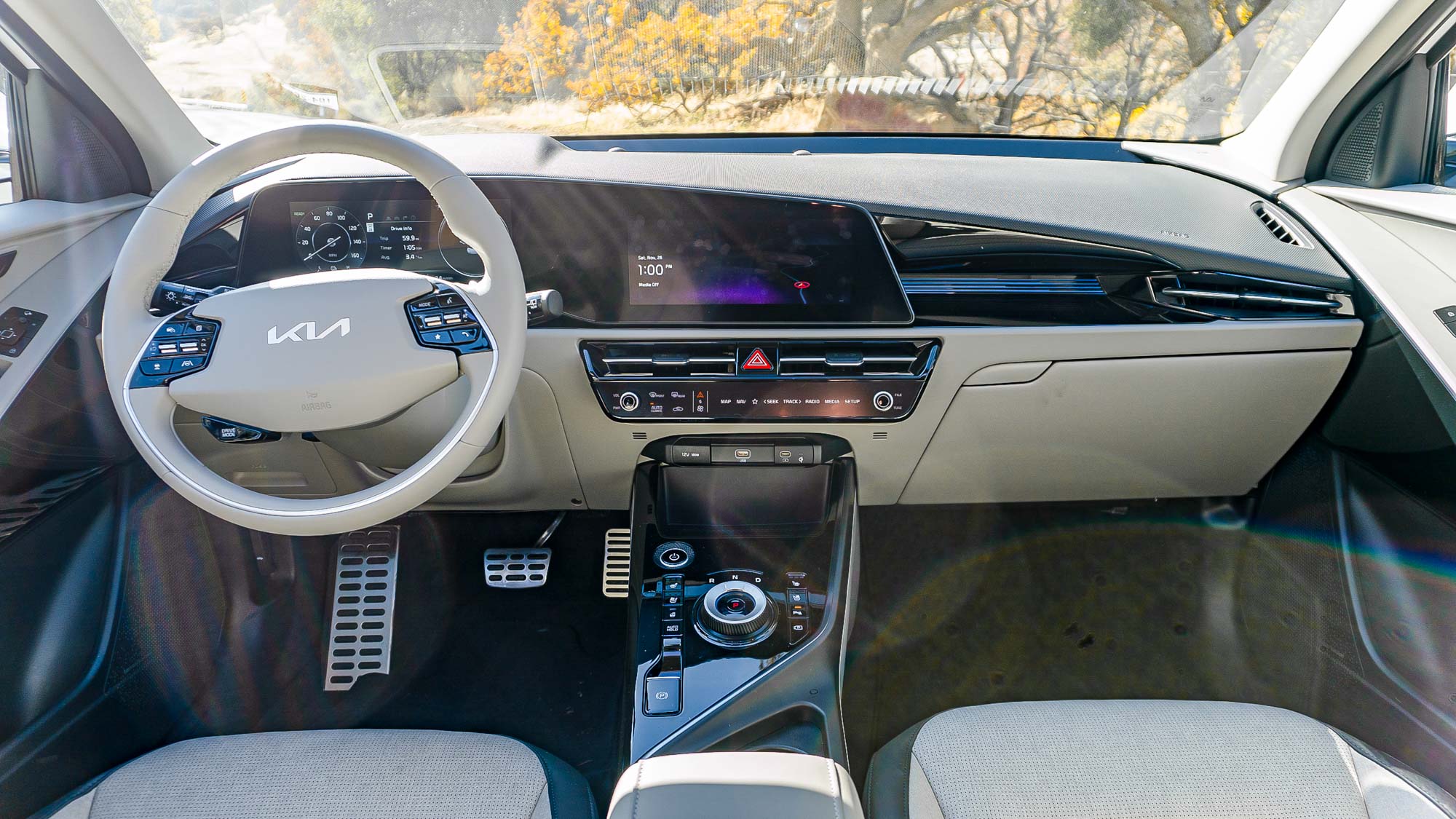
That said, Kia’s voice assistance is not worth even trying to use. Instead, you’re better off using Siri or Google Assistant. The vehicle supports CarPlay and Android Auto and makes setting up both these systems a snap. Of all the vehicles we’ve tested, the Hyundai Motor Group seems to have figured out the simplest way to get our smartphones connected and the Niro is no exception.
In the back seat, the Wave trim level we drove had a proper power outlet that we could use to plug in household items. It makes the Niro EV a generator if the power goes out of your house, or a source of electricity while tailgating or camping. In areas like Northern California where summer power outages are the norm, this could be one way of dealing with the lack of electricity.
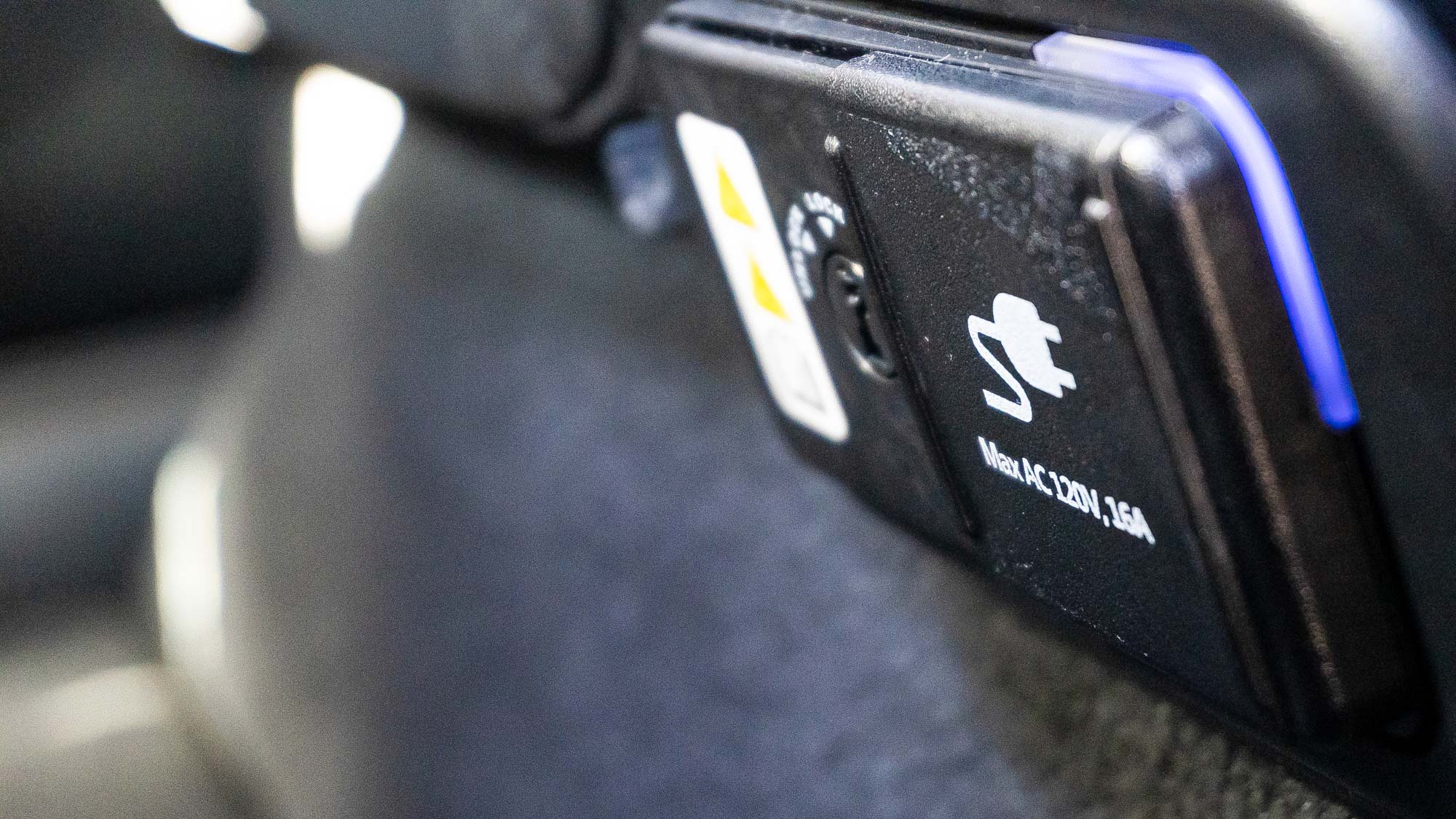
As for safety features, the Niro has auto emergency braking and pedestrian detection, rear cross-traffic warning, safe exit assist, driver attention warning, leading vehicle departure alerts, and high beam assist all standard.
Kia Niro EV review: The Drive
Behind the wheel, the Kia Niro EV will not quicken the pulse. You won’t be wowed by its cornering or zero to 60 time of 7.1 seconds. Sure you get low-end EV torque but it’s nothing special compared to every other EV on the road.
What it lacks in performance driving it makes up for in comfortable daily driving. For day-to-day errands and tackling life, the Niro EV performed admirably. There’s no harness to ride outside of rough road conditions. Steering is smooth and uneventful, which is a good thing, and while it’s larger than its predecessor this car is nimble for its size in tight parking lots.
The Niro has three driving modes, eco, normal, and sport. There are low-end differences between the settings, extra torque offered at highway speeds in normal and sport mode that the eco mode lacks. Outside a few moments when you need to take off as quickly as possible, normal mode is fine for 95 percent of your driving
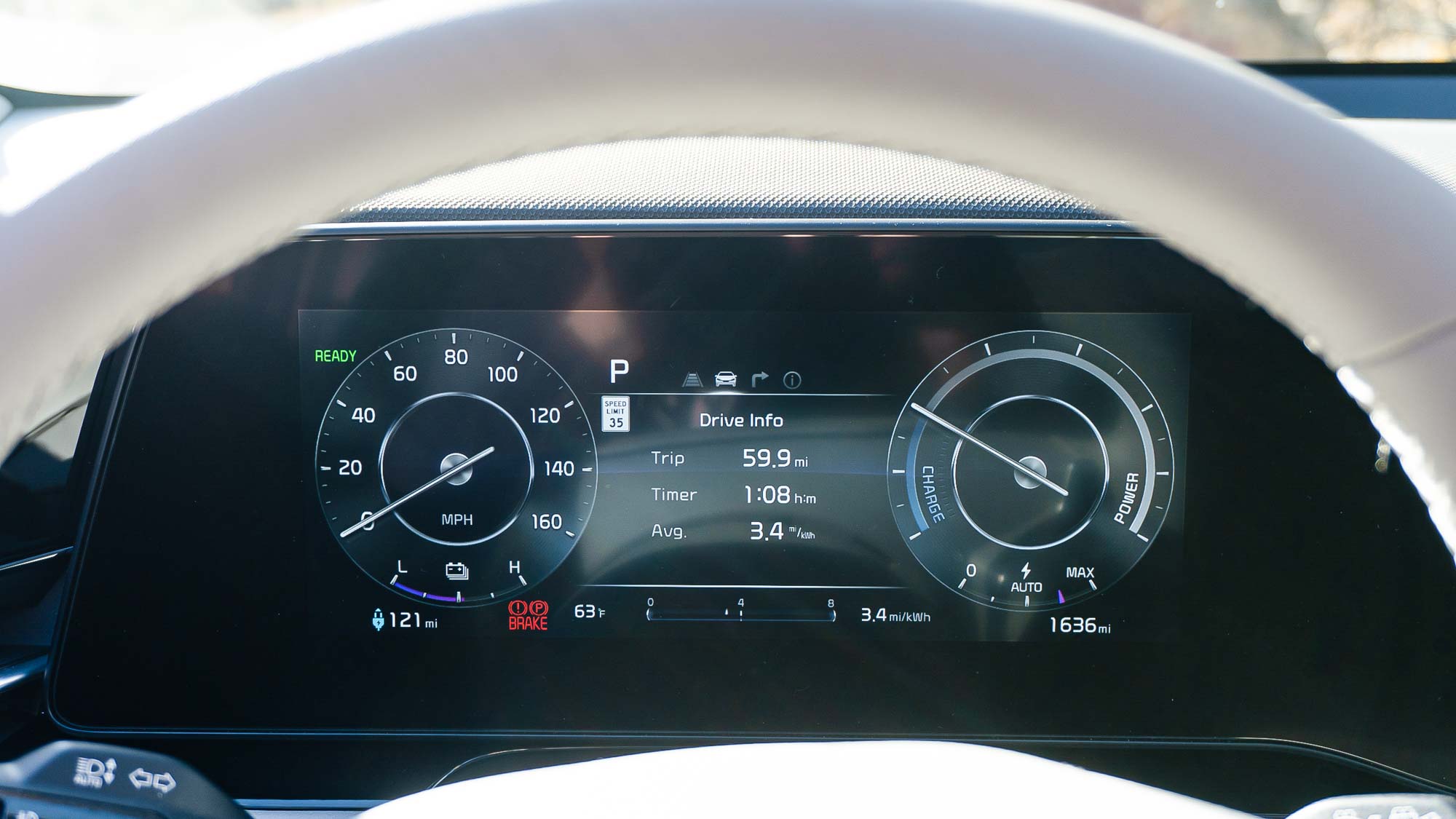
Regenerative braking has five levels from zero (no regenerative braking) up to three (the highest level) and a final one-pedal i-Pedal setting. The steering wheel paddles are used to set the level of regeneration and make it easy to adjust on the fly. The one-pedal driving worked well and brought us to a complete stop. Judging its stopping power took about half a day of driving before we could confidently judge where the vehicle would stop after releasing the accelerator.
Our biggest disappointment with the Niro EV is that there is no all-wheel drive option. It’s front-wheel drive only which does offer better traction and stability for most drivers than a rear-wheel drive vehicle. Throw some snow tires on the vehicle and it’ll be fine when the white stuff falls from the sky. Still, we would have liked the option of a bit more power and traction with an all-wheel drive Kia EV. I guess folks will have to upgrade to the EV6 for that.
Day after day though, the Niro EV delivered a solid driving experience completely in line with its market placement.
Kia Niro EV review: Navigation and Driver Assistance features
Our vehicle was equipped with adaptive cruise control and Kia’s lane-keeping assistance. We found vehicle tracking on the freeway to be about average, based on other systems currently on the market. A large majority of the time the Niro slowed within parameters that were comfortable. But a few times it felt as though we needed to apply the brakes because the system wasn’t slowing down quickly enough for our tastes.
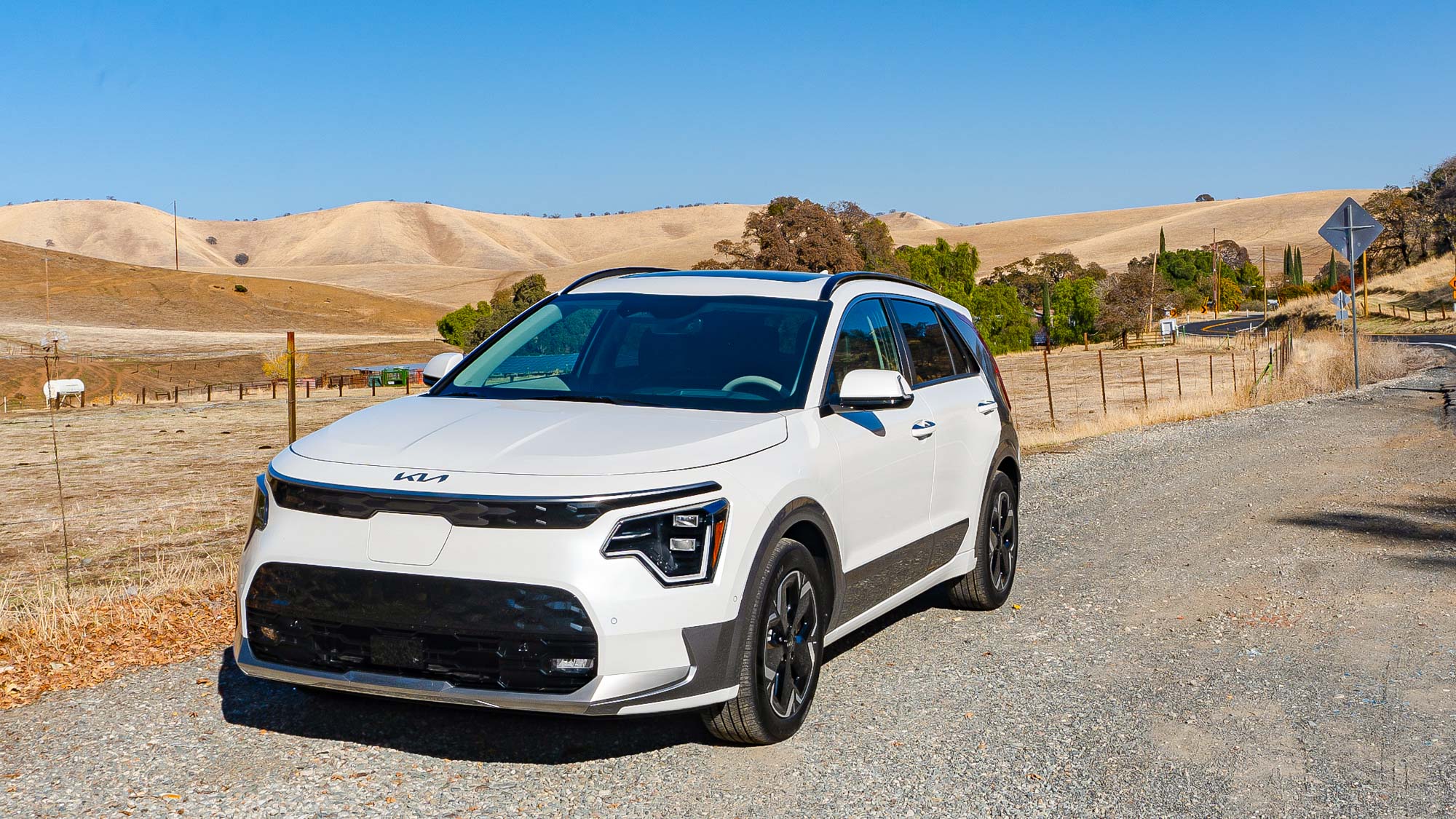
We had the same experience with cut-ins (other vehicles pulling in front of our vehicle and forcing the Niro to slow down). The vehicle handled a vast majority of them without issue but in one instance, we felt compelled to use the brakes ourselves while being cut off in heavy traffic.
Lane tracking on the Kia Niro is fine in a straight line, but tight curves require the driver to add additional force and take over the steering from the system. On a long boring interstate drive, it can be helpful, but on highways with a higher-than-average amount of curves, you’re best leaving it off.
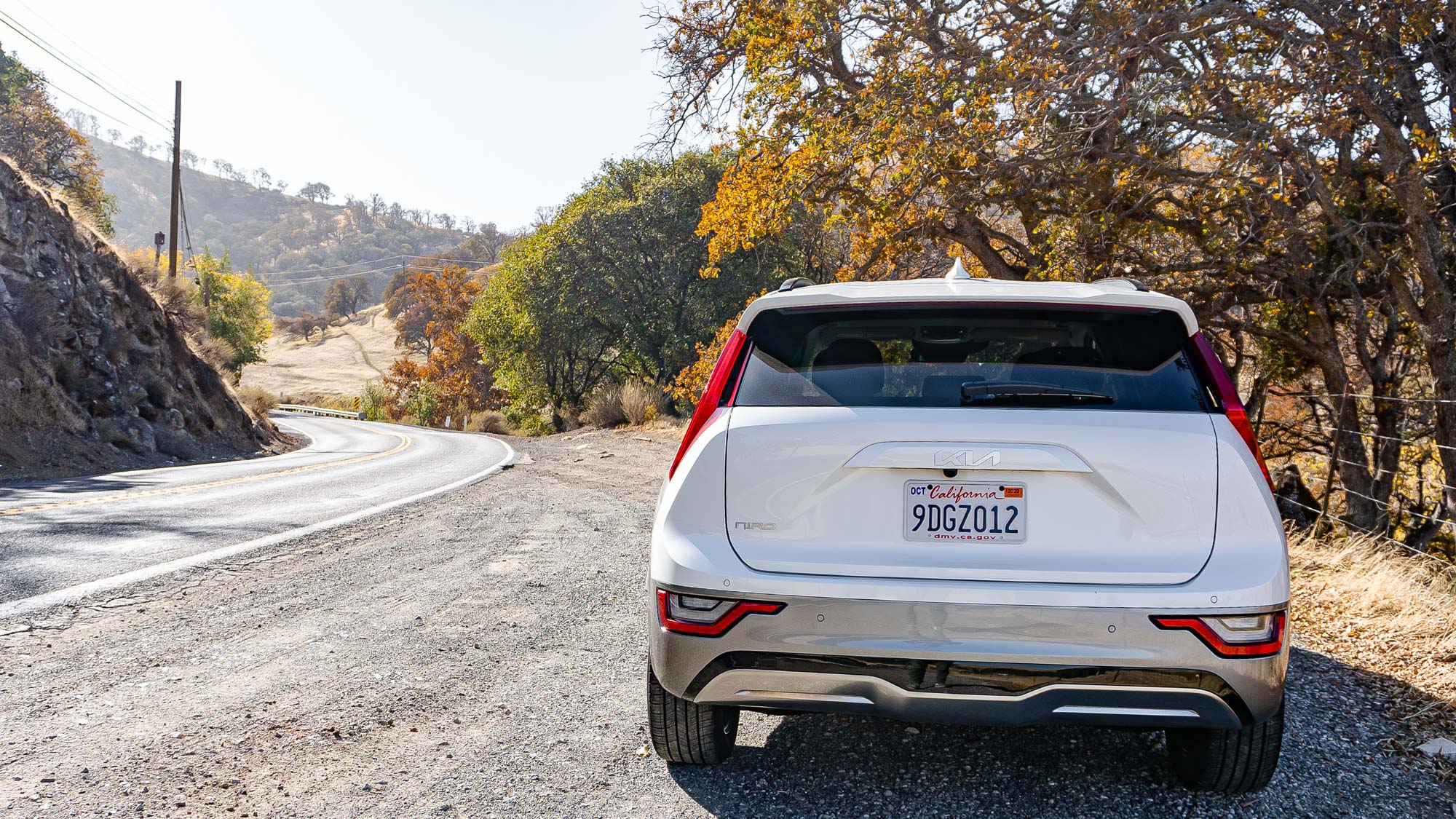
As for navigation, you’re best off using either Google Maps or Apple Maps. Kia’s navigation will get you where you’re going but it’s not as robust as offerings from Apple or Google. It’s likely you’re already plugging your phone into your car so you might as well use the better offering from the tech companies.
You can find charging stations with the system but the list of chargers is accompanied by an arrow indicating the station’s direction. It would be nicer if this was part of a map of the nearby chargers. Kia and other automakers still need to take a page out of Tesla’s book and better integrate charging locations along routes.
Kia Niro EV review: Verdict
Kia, like its sister company Hyundai, has created two tiers of EVs. There are the new exciting EVs based on the E-GMP platform and there is the Kia Niro EV and Hyundai Kona Electric. They’re less expensive and not quite as impressive as the new shiny EVs out of Korea.
That said, the 2023 Niro EV fills an important spot within the EV market, with a solid EV that starts at $40,000. The price point gives customers some of the best bits of tech out of Kia without hitting $50,000. It also does this in a vehicle that’s a great around-town EV that has enough range and just enough DC fast-charging support for the occasional road trip.
The slightly larger Kia Niro brings a family-friendly small SUV to the EV world that will seat five or four adults comfortably with a highly efficient powertrain that bests the EPAs rating. All you have to do is get used to switching between the climate and media controls.
